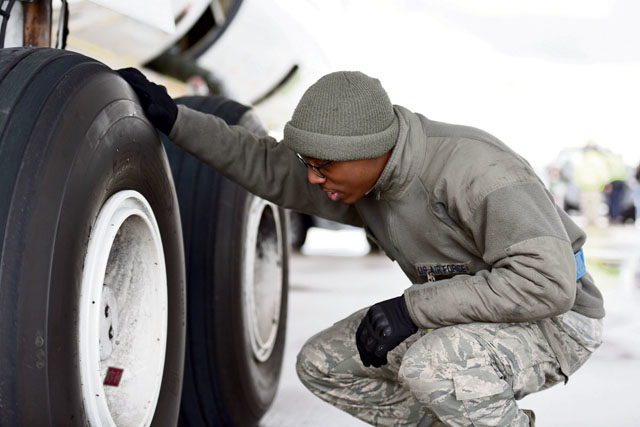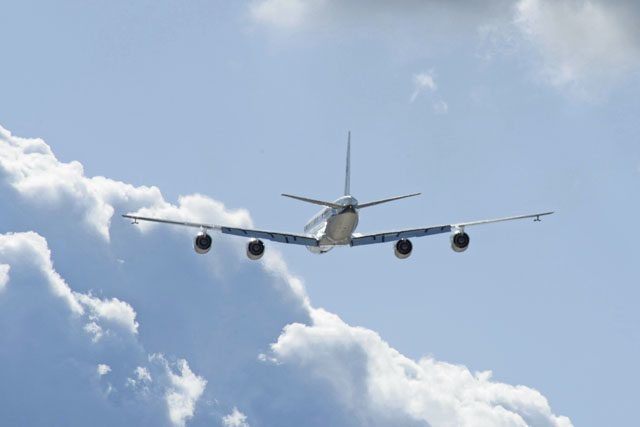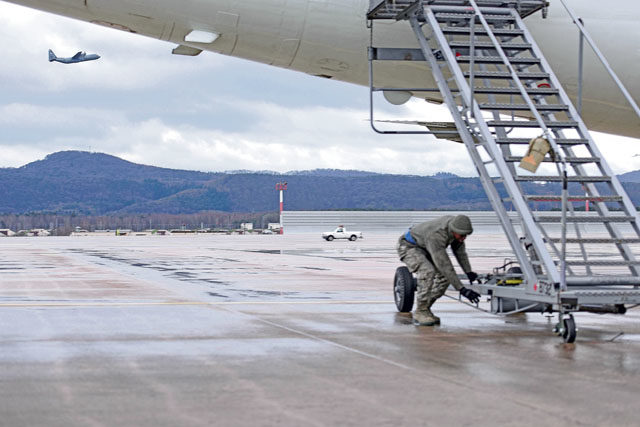
The 721st Air Mobility Operations Group provided aircraft ground service support to the United States National Aeronautics and Space Administration Armstrong Flight Research Center and to the German Aerospace Agency as they performed a study on biofuels from Jan. 17 to 19 on Ramstein Air Base.
According to NASA, the objectives of the study are to examine the effects of alternative fuels and engine technology on aircraft emission. Other objectives include evaluating the performance of new instruments and inlets for potential use in future earth-science missions.

Scientists believe this research will help lead to more environmentally-friendly fuel designs and decrease the formation and persistence of an aircraft’s contrails, the condensed white streaks of vapor left by an aircraft.
The study is known as the NASA DLR Multidisciplinary Airborne Experiment and Emission and Climate Impact of Alternative Fuel research projects.
To carry this study out, NASA and the German Aerospace Agency required assistance from the 721st AMOG.
According to a memorandum of agreement between the 721st AMOG and NASA, the 721st AMOG provided primary parking and towing services for the NASA research aircraft. They provided an aircraft ground power unit, a heater cart for ground maintenance, gaseous nitrogen for aircraft landing gear and tires, and breathing oxygen to service the aircraft’s cabin emergency oxygen system. A staircase truck for personnel to board the aircraft, a baggage conveyor capable of unloading support equipment, and lavatory services were also provided by the 721st AMOG to NASA.
The 721st AMOG additionally supported NASA with office space and Wi-Fi to help carry out the research experiment.
The support was necessary to ensure NASA smoothly carries out their mission.

The services provided by the 721st AMOG allowed NASA to reach closer to their aeronautics research goals.
According to NASA, continued investment and support will create future U.S. aircraft that consume only half as much fuel and generate only one quarter of current emissions compared to aircraft flown today.







